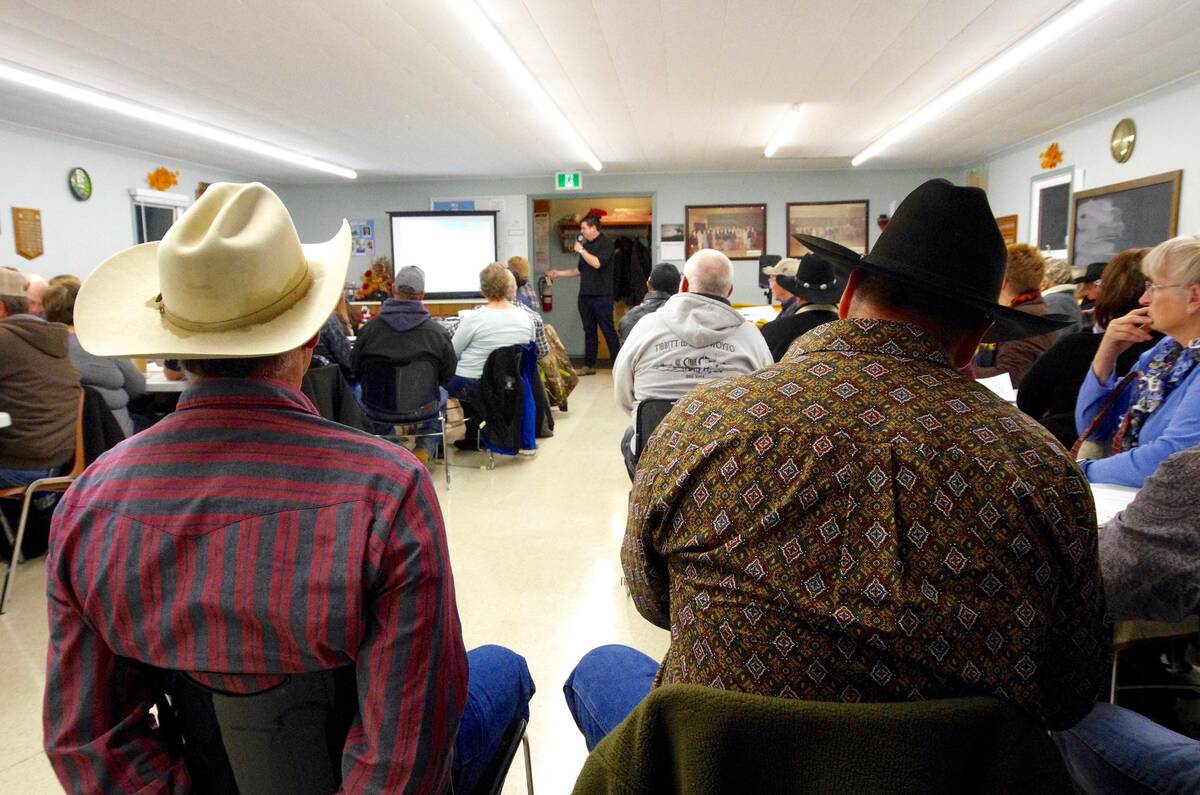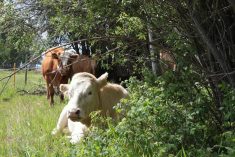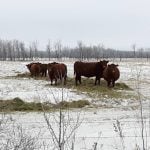We are all trying to get factual information on the health, production and welfare of our herds. Sometimes it is hard to stay abreast of all the information.
Publications like this one, and websites of the Beef Cattle Research Council, Canadian Cattle Association and provincial beef producers’ groups, can help with that.
YouTube videos, if specific enough and from the right sources, can sometimes offer good information, but one needs to filter it.
Read Also

Don’t blow off that beef producer meeting
Local veterinarians and livestock experts often speak at producer events, sharing good advice for farmers on vaccines, calving, herd management and more.
Today, I’m going to write about an audio-only medium, podcasts.
The beauty of podcasts is they can be listened to anywhere and from a wide range of devices. They’re very time efficient. A podcast can play in the background when driving or doing farm work, as long as attention is still focused on the task at hand.
The Beef Cattle Health & Nutrition Podcast is a joint effort funded by the Beef Cattle Research Council and Alberta Beef Producers. It is available anywhere with computer, iPad or cell phone access.
The host is Dr. John Campbell, a well-known researcher and instructor of veterinary students in Saskatoon. In each episode, Campbell reaches out to recognized and respected people in whatever field is up for discussion and has a conversation. Although his goal is to keep the conversations under 30 minutes, they cover lots of ground and he leads with practical questions on the subject.
There will be a series of 50 podcasts, released on a weekly basis.
Producers can access these at any time, picking topics they are interested in. They are not only related to veterinary health, but are specific to beef production in Canada and, as the name indicates, nutritionists, toxicologists and other professionals are guests. This gives broad coverage for the beef industry.
You can search the podcast’s title through Google. Also, the various apps and audio players are listed. I am not that tech savvy (maybe it’s my age), but I counted 11 different media that carrying the podcast, including Spotify and Apple Podcasts.
The other worthy thing of note is, if you have a topic you think could help the cattle industry, drop the host an email at [email protected].
I have listened to all the posted episodes — just under 30 to date — and there is good, practical information in every edition. Each podcast includes a portion near the end where Campbell poses questions to the speakers, covering how the presented knowledge can apply on the farm.
Veterinarians can gain lots of good information as well, to use with their clients.
If you want to know more about Johne’s disease, current diagnostics and an available Johne’s disease decision-making tool, Dr. Cheryl Waldner from Saskatoon discusses that in one episode.
Researcher and large animal veterinarian Dr. Joyce Van Donkersgoed discusses core vaccines in the cow-calf world in another.
Storage and vaccine handling tips are on yet another episode. Producers need to be mindful of this, from only rehydrating as much vaccine as you can use in an hour to placing treatments at least a hands-breadth apart.
Many other tips are covered in this episode. We all spend lots of money on vaccines and they must be given properly to get the results we need.
The great value in testing water and what to look for are topics covered by Bart Lardner, a long-time researcher in Saskatchewan. He talks about extended grazing systems in another episode. Other feed-related topics include mycotoxins and ergot poisoning.
Two types of lameness are covered on different episodes.
Dr. Chris Clark and Dr. Karin Orsel talk about foot rot and digital dermatitis, respectively. Both episodes were interesting and informative.
From semen evaluation to animal health emergencies to colostrum management and scours prevention, there is something for everybody in these podcasts. They are all from a Canadian perspective and easily available.
Just like these magazine articles, you can search them after the fact and revisit them.
There is so much information out there for producers, which is great in this information age, and many ways to access it.
















